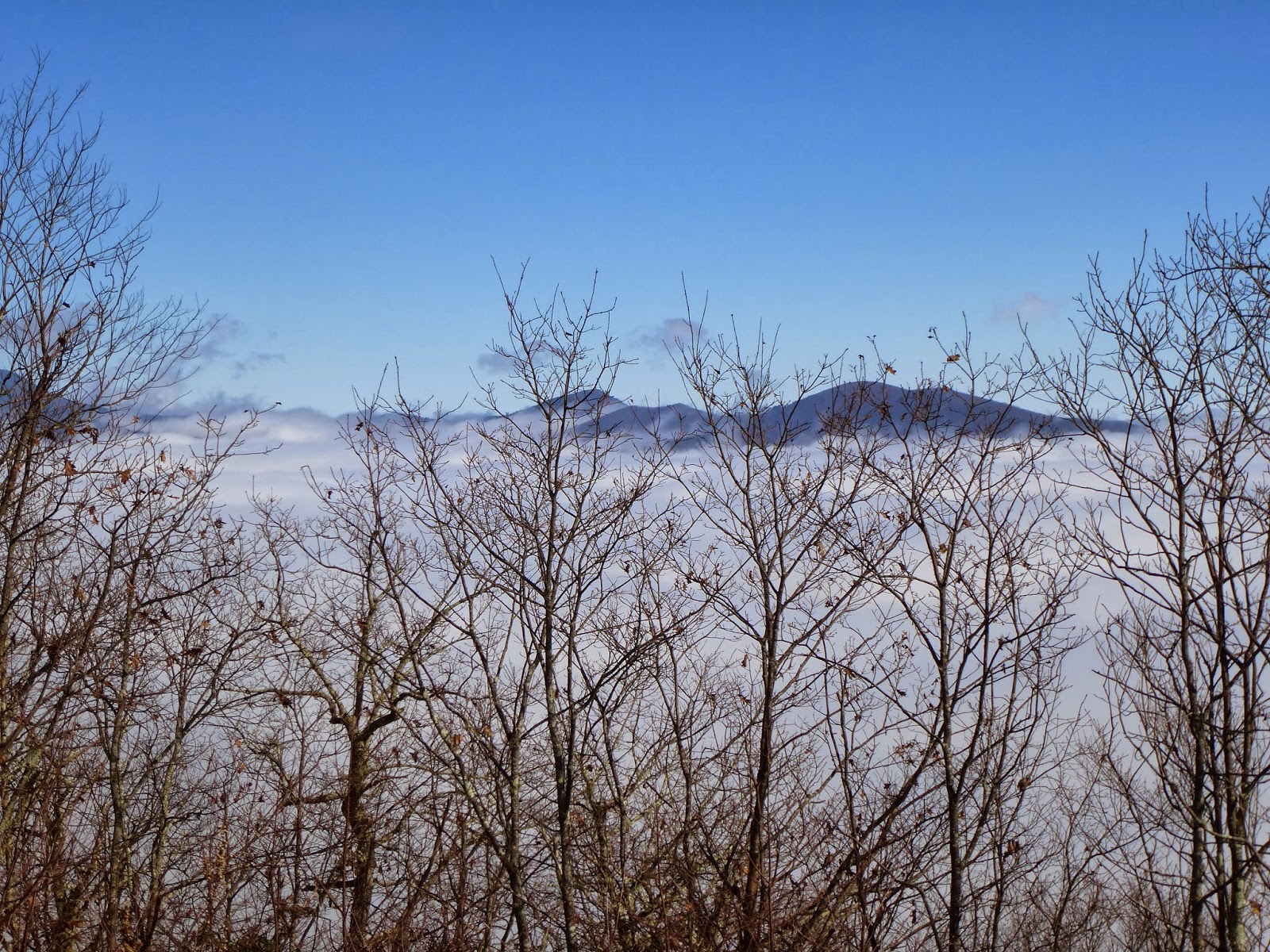The plan was to visit several of the off trail spots in Hanging Rock State Park. First, we wanted to get in the 100 foot cave in Hanging Rock, then the cave in Cook's Wall, then atop Indian Face and Balanced Rock, finally a cascade on Cascade Creek. Of those we managed one out of four.
Heading up to Hanging Rock, Matt, our leader, mentioned how nice it was to have someone (me) along who knew where the cave was. Everyone was deflated to hear that although, I had searched for the cave, had never found it. We circumnavigated Hanging Rock, climbed up every crack but came away empty-handed. We did find a nice campsite, below, between a couple huge overhanging rocks.
We did find the cave in Cook's Wall. It had some old carvings in it which dated back many years. It is always difficult to authenticate such carvings. These were names and dates carved in the rock. So old they had moss growing in them.
Next on the agenda was Indian Face. However, I forgot, Matt said something about Devil's Chimney or something like that, so off we were in Mountain Laurel and briers. I don't care much for briers and these briers were thick as two short planks. Later that evening I cleaned 44 brier scratches. My clippers came in handy here. There was no other way through the mess. Finally we popped out on the ridge between two rock spires. There was no good way to proceed along the ridge. Rick crawled up a crack and disappeared into a hole. Several minutes later, he called for us to follow. It was tough going and Dale smacked his knee hardly on a rock as I pulled him up a chute.
The ridge walk was tough but enjoyable. Matt had to push me up a spot where a mistake would be very costly. Other than that, I handled the ridge well.
There was no sunlight left after the ridge walk, so the rest of the spots would have to remain unexplored until later.







































